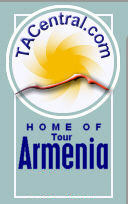Some of the last surviving Assyrian communities in the world are in Armenia. In these communities, Assyrian is still taught in community schools, and Assyrian folk design can be found on the inside of their homes. Otherwise they are very much like their Armenian neighbors.
Assyrian language, of Semitic and Aramaic origin, is quite distinct from the Indo-European Armenian tongue. Assyrians living in Armenia are Christians, converted around the same time as other groups in the region.
History
Once a mighty empire that covered most the near east, from the Mediterranean to the Indian Kush, Assyria collapsed just before the ancestral Armenian Urartian empire. Like many cultures before them, Assyrians were subjected to systematic assimilation and deportation after the destruction of their powerful empire more than two millennia ago. The first Assyrian settlers came to the territory of present-day Armenia from Persia in the early 19th century after it was incorporated into the Russian Empire.
And like the Armenians and Greeks, Assyrians shared a similar genocidal fate during the late 19th and early 20th cc. A British mandate calling for the creation of an Assyrian state during World War I encouraged the Assyrian population to resist Arab and Persian domination, which, when the British pulled its support for an Assyrian State, ended in the death of almost 1,000,000 Assyrians (2/3 of the population) by Turkish, Arab, Persian, and Kurdish populations. After World War One, the Assyrians ("The Smallest Ally" as the British called them) started a mass exodus to countries around the world (especially between the years 1919 and 1923.)
In Armenia
Assyrians today mostly confess the Nestorian or Assyrian Church of the East, the Jacobite Monophysite Church and the Assyro-Chaldaic Church affiliating the Nestorians who joined the Unity with the Roman Catholic Church. Most Assyrians in Armenia and the former Soviet Union countries confess Orthodoxy.
The Assyrians speak the new-Aramaeic dialects going back to the Old Aramaeic (the North-Western Group of Semitic Languages), the principal language of administrative communication over a huge space embraced by the Ancient Persian Empire. Therefore the Old Aramaean is sometimes called the Imperial Aramaeic (Reichsaramaeisch). Several parts of the Bible are written in this language, while its later variety known as SYRIAC, generated an opulent theological and historical literature.
The literary Assyrian language was developed in the 19th century based upon the Urmia dialect. The writing is based upon the Syrian alphabet – Estrangello.
Assyrians in Armenia, a Christian people, numbered 9,000 in the late 1980s but many emigrated in the following years in the face of worsening economic conditions. Currently there are about 8000 left in Armenia (500 in Yerevan).
Schools with Assyrian attendance practice elective instruction of the Assyrian language. Virtually all members of the Assyrian community are fluent in Armenian and Russian. Allocated to them annually by the RA Ministry of Education are hors de concourse places at the Department of Oriental Studies, Yerevan State University, within the framework of training teachers from among National Minorities.
The traditional economic activity of the Assyrians in Armenia is agriculture, gardening and viniculture; distant-pasture stock breeding is prevailing among the Assyrians of Iran, Iraq, Turkey and Syria; in Russia it is the handicrafts. A large stratum in Armenia is also constituted by the intellectuals, including the class of government employees. To be noted as a whole, is a high degree of integration.
Communities at Arzni, Verin Dvin and Dmitrovo ("Ghuilasar") continue to thrive, as they celebrate their heritage at annual festivals held in the spring and fall.
A fascinating accont of an Assyrian ritual celebraiton can be found at the AAASC web site.




